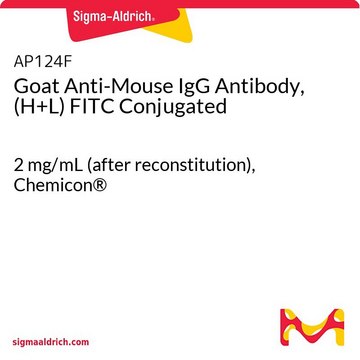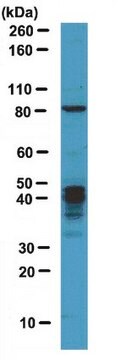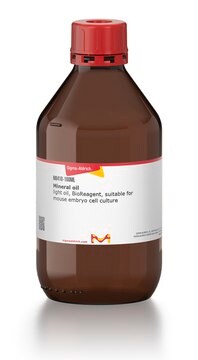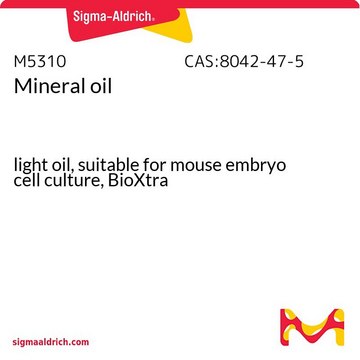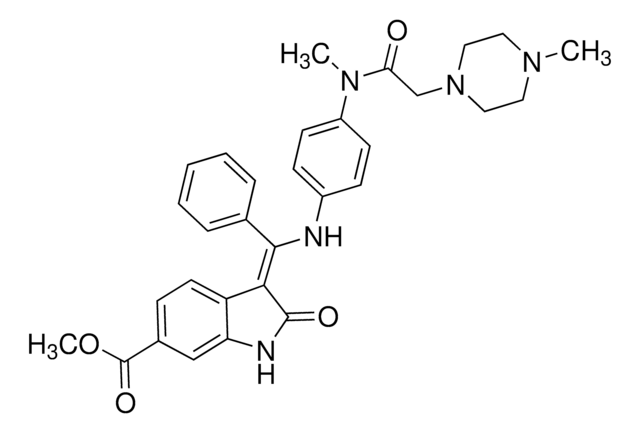MABE70
Anti-MBNL1 Antibody, clone 4A8
clone 4A8, from mouse
Synonym(e):
muscleblind-like (Drosophila), muscleblind (Drosophila)-like, muscleblind-like protein 1, Triplet-expansion RNA-binding protein
About This Item
Empfohlene Produkte
Biologische Quelle
mouse
Qualitätsniveau
Antikörperform
purified immunoglobulin
Antikörper-Produkttyp
primary antibodies
Klon
4A8, monoclonal
Speziesreaktivität
human
Methode(n)
immunocytochemistry: suitable
western blot: suitable
Isotyp
IgG1κ
NCBI-Hinterlegungsnummer
UniProt-Hinterlegungsnummer
Versandbedingung
wet ice
Posttranslationale Modifikation Target
unmodified
Angaben zum Gen
human ... MBNL1(4154)
Verwandte Kategorien
Allgemeine Beschreibung
Immunogen
Anwendung
1:4 dilution from a representative lot detected MBNL1 in myotonic dystrophy cells. Data courtesy of Dr. Ian Holt, Wolfson Centre for Inherited Neuromuscular Disease.
Qualität
Western Blot Analysis: 1:10,000 dilution of this antibody detected MBNL1 on 10 µg of HEK293 cell lysate.
Zielbeschreibung
Physikalische Form
Sie haben nicht das passende Produkt gefunden?
Probieren Sie unser Produkt-Auswahlhilfe. aus.
Lagerklassenschlüssel
12 - Non Combustible Liquids
WGK
WGK 1
Flammpunkt (°F)
Not applicable
Flammpunkt (°C)
Not applicable
Analysenzertifikate (COA)
Suchen Sie nach Analysenzertifikate (COA), indem Sie die Lot-/Chargennummer des Produkts eingeben. Lot- und Chargennummern sind auf dem Produktetikett hinter den Wörtern ‘Lot’ oder ‘Batch’ (Lot oder Charge) zu finden.
Besitzen Sie dieses Produkt bereits?
In der Dokumentenbibliothek finden Sie die Dokumentation zu den Produkten, die Sie kürzlich erworben haben.
Unser Team von Wissenschaftlern verfügt über Erfahrung in allen Forschungsbereichen einschließlich Life Science, Materialwissenschaften, chemischer Synthese, Chromatographie, Analytik und vielen mehr..
Setzen Sie sich mit dem technischen Dienst in Verbindung.

